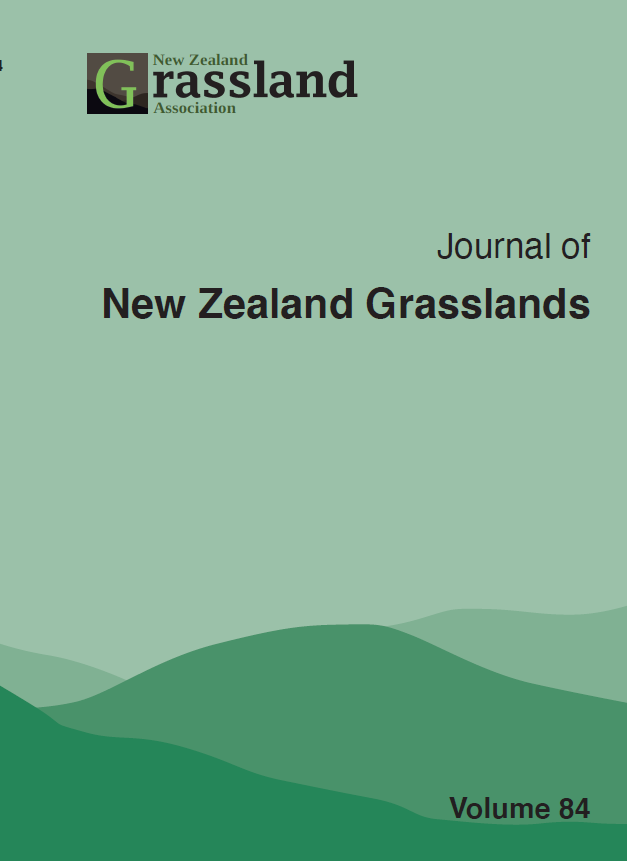A survey comparing regeneratively and conventionally managed pastures and farm management policies
DOI:
https://doi.org/10.33584/jnzg.2022.84.3576Abstract
A pasture and farm management survey was conducted on thirteen geographically paired regenerative and conventional beef and sheep farms in the upper North Island to identify differences in pasture attributes and management practices. Farms were paired by geographical location and livestock type. When compared to conventional pastures, regenerative pastures had a similar number of grass, legume and broadleaf species (averaging 4, 1 and 3 species respectively), three times as much legume (13 compared to 4% content) and 30% less perennial ryegrass in total DM (P<0.01) but a similar broadleaf content. There was no difference between pasture types in pre- or post-grazing covers. Compared to conventional pastures, soils sampled from regenerative pastures had a higher pH, and herbage had higher levels of calcium, boron, molybdenum (P<0.05) and a trend towards lower Olsen P values (P=0.052). There was a divergence between farm types in fertiliser policies, with regenerative farmers generally not using synthetic nitrogen (N) and phosphorus (P) products and applying a wider range of nutrients. Herbicides and pesticides were used across both farm types. Changes in pasture composition (i.e., less perennial ryegrass and more clover) and soil nutrient status were consistent with lower N and P inputs on regenerative farms.
Downloads
Downloads
Published
How to Cite
License

This work is licensed under a Creative Commons Attribution-ShareAlike 4.0 International License.
Copyright
This work is licensed under a Creative Commons Attribution-Non Commercial-NoDerivatives 4.0 International License. Rights granted to the New Zealand Grassland Association through this agreement are non-exclusive. You are free to publish the work(s) elsewhere and no ownership is assumed by the NZGA when storing or curating an electronic version of the work(s). The author(s) will receive no monetary return from the Association for the use of material contained in the manuscript. If I am one of several co-authors, I hereby confirm that I am authorized by my co-authors to grant this Licence as their agent on their behalf. For the avoidance of doubt, this includes the rights to supply the article in electronic and online forms and systems.




